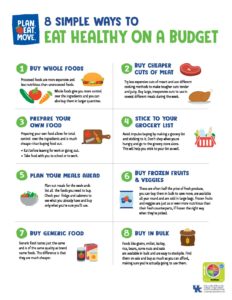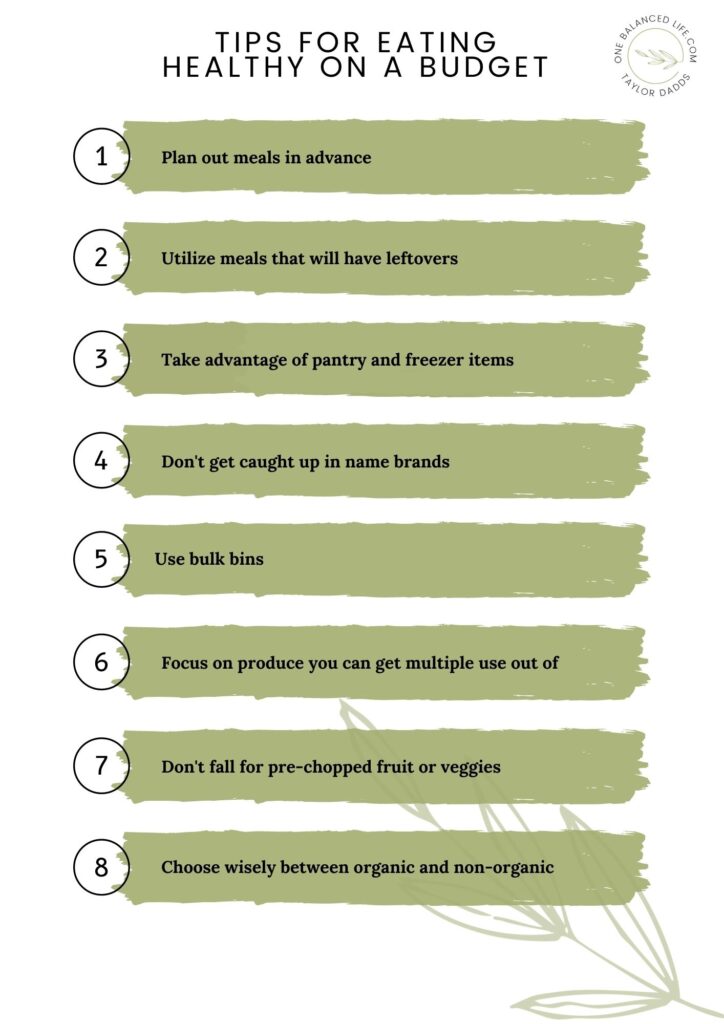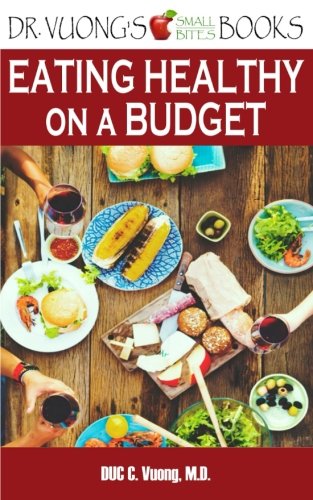I’ve always believed that eating healthy should never have to break the bank. In my guide to eating healthy on a tight budget, I will share practical tips and strategies to help you make nutritious choices without draining your wallet. From budget-friendly grocery shopping tricks to affordable meal planning ideas, you’ll discover how to prioritize your health without sacrificing your financial well-being. Let’s embark on this journey together, and let me show you how easy it can be to nourish your body on a budget.
A Guide to Eating Healthy on a Tight Budget

1. Planning and Budgeting for Healthy Eating
1.1 Set a Food Budget
Setting a food budget is an essential step in eating healthy on a tight budget. By allocating a specific amount of money for groceries each week or month, you can better control your spending and ensure that you have enough funds for nutritious foods. Take some time to evaluate your income and expenses and determine how much you can realistically afford to spend on food.
1.2 Make a Meal Plan
Making a meal plan is a cost-effective way to ensure that you are eating healthy while sticking to your budget. Plan out your meals for the week, considering a variety of nutrient-dense foods, and create a shopping list based on those meals. By knowing exactly what you need to buy, you can avoid impulse purchases and reduce food waste.
1.3 Plan for Leftovers
Planning for leftovers can help stretch your budget even further. When cooking meals, intentionally make extra portions that can be enjoyed as leftovers for lunch or dinner the next day. Not only does this save you time and effort in preparing additional meals, but it also allows you to make the most of the ingredients you already have, reducing the need to buy more food.
2. Smart Shopping Strategies
2.1 Make a Grocery List
Making a grocery list is an effective way to ensure that you only buy what you need and avoid unnecessary expenses. Before heading to the grocery store, take the time to plan your meals and create a list of all the ingredients and items you require. Stick to your list while shopping and resist the temptation to add extra items to your cart.
2.2 Buy in Bulk
Buying in bulk can be a great cost-saving strategy when it comes to healthy eating. Consider purchasing non-perishable items such as grains, beans, nuts, and seeds in larger quantities. Not only is buying in bulk often cheaper per unit, but it also reduces the frequency of shopping trips and decreases packaging waste.
2.3 Shop Seasonally
Shopping for fruits and vegetables that are in season can help you save money while still enjoying fresh produce. Seasonal produce is usually more abundant and therefore tends to be priced lower. Visit your local farmers’ markets or explore the produce section of your grocery store to find the best deals on seasonal items.
2.4 Compare Prices
Don’t be afraid to compare prices between different grocery stores or brands. Although it may take a little extra time and effort, comparing prices can help you identify the most affordable options for the foods you need. Look for sales and discounts, and consider switching to generic or store brands, as they often offer similar quality at a lower price.
2.5 Avoid Impulse Purchases
Impulse purchases can quickly derail your budget and lead to unhealthy food choices. To avoid falling into this trap, try to shop with a full stomach, so you’re not tempted by hunger-induced cravings. Stick to your grocery list and remind yourself of your budgetary constraints to help stay on track.
2.6 Utilize Coupons and Sales
Coupons and sales can be powerful tools for saving money on groceries. Keep an eye out for coupons in newspapers, magazines, and online platforms, and make sure to take advantage of any sales or discounts that are available. By combining coupons with sales, you can maximize your savings and make healthier choices more affordable.

3. Choosing Nutrient-Dense Foods
3.1 Focus on Whole Foods
When trying to eat healthy on a tight budget, prioritizing whole foods is key. Whole foods, such as fruits, vegetables, whole grains, and lean proteins, offer a wealth of nutrients while often being more affordable than heavily processed alternatives. Make an effort to incorporate these wholesome options into your meals and snacks to ensure a well-balanced diet.
3.2 Include Fresh Fruits and Vegetables
Fresh fruits and vegetables are essential for a nutritious diet, providing a wide range of vitamins, minerals, and antioxidants. While fresh produce can sometimes be expensive, there are ways to make it more affordable. Opt for seasonal options, buy in bulk when possible, and consider frozen or canned varieties, which can be just as nutritious and less costly.
3.3 Opt for Lean Proteins
Proteins are crucial for building and repairing tissues, and choosing lean options can be both healthy and budget-friendly. Look for affordable sources of lean protein, such as skinless chicken, turkey, beans, lentils, and tofu. These options provide essential amino acids without breaking the bank.
3.4 Incorporate Whole Grains
Whole grains are an excellent source of fiber and essential nutrients. Including options like brown rice, whole wheat bread, and oats in your meals can provide long-lasting energy and promote good digestive health. Look for bulk options or store brands to find whole grains at a budget-friendly price.
3.5 Choose Healthy Fats
While fats often have a bad reputation, not all fats are unhealthy. In fact, healthy fats are an essential part of a balanced diet. Include sources of healthy fats, such as avocados, nuts, seeds, and olive oil, in your meals to support brain function and overall well-being. These fats can often be found at reasonable prices, especially when bought in bulk.
4. Cooking at Home
4.1 Meal Prep and Batch Cooking
Meal prepping and batch cooking are fantastic strategies for saving time and money while eating healthy. By dedicating a specific day or time each week to prepare multiple meals in advance, you can streamline your cooking process and ensure you have healthy options readily available. Prepare larger portions and store them in the fridge or freezer for easy reheating throughout the week.
4.2 Use Cheaper Cuts of Meat
Choosing cheaper cuts of meat is an excellent way to reduce costs while still enjoying protein-rich meals. Tougher cuts of meat, such as beef chuck or pork shoulder, are often more affordable and can be transformed into delicious and tender dishes when cooked slowly. Utilize cooking methods like braising or slow cooking to make the most of these economical choices.
4.3 Make Homemade Sauces and Dressings
Store-bought sauces and dressings can add up in cost while also packing in added sugars and unhealthy ingredients. Making your own sauces and dressings at home not only allows you to control the ingredients but also saves money. With simple recipes and basic pantry staples, you can create flavorful and nutritious sauces to enhance your meals.
4.4 Avoid Processed and Convenience Foods
Processed and convenience foods may be convenient, but they can be costly both for your wallet and your health. These foods tend to be high in added sugars, unhealthy fats, and sodium, while lacking essential nutrients. By opting for homemade meals using whole ingredients, you can save money and prioritize your health.

5. Maximizing the Nutritional Value
5.1 Grow Your Own Produce
If you have space and the time to dedicate to it, growing your own produce can be a rewarding and cost-effective way to maximize the nutritional value of your meals. Start small with a windowsill herb garden or grow vegetables like tomatoes or peppers in containers. Not only will you have fresh, nutritious produce at your fingertips, but you’ll also reduce your grocery expenses.
5.2 Preserve and Store Foods
Preserving and storing foods can help you make the most of seasonal produce and reduce food waste. Consider canning, freezing, or dehydrating excess fruits and vegetables to enjoy them throughout the year. These methods can help you maintain a well-rounded diet while also saving money on future grocery trips.
5.3 Use Leftovers Creatively
Don’t let leftovers go to waste – instead, get creative with how you use them. Transform yesterday’s roasted chicken into a delicious chicken salad or repurpose cooked vegetables into a flavorful frittata. By finding new ways to reinvent leftovers, you’ll save money and prevent food from ending up in the trash.
5.4 Reduce Food Waste
Food waste not only impacts your budget but also contributes to environmental issues. To reduce food waste, plan your meals and portion sizes carefully, store food properly to extend its shelf life, and use up ingredients that are close to their expiration date. Get creative with incorporating leftover fruits and vegetables into smoothies, soups, or stir-fries to minimize waste.
6. Tips for Eating Out on a Budget
6.1 Choose Affordable Restaurants
When dining out, selecting affordable restaurants can help you stick to your budget. Look for casual eateries, local establishments, or even food trucks that offer meals at a reasonable price. By doing some research or asking locals for recommendations, you can find hidden gems that provide tasty and affordable options.
6.2 Split Meals or Take Them Home
Portions at restaurants are often larger than necessary, leading to wasted food and money. Consider splitting a meal with a dining partner or taking half of your meal home for another day. Not only will this help you save money, but it will also allow you to enjoy your favorite dishes without overeating.
6.3 Skip Beverages and Desserts
Beverages and desserts can significantly add to the cost of a meal. Opting for water instead of sodas or alcoholic beverages can save you money while also being a healthier choice. Similarly, skipping desserts or enjoying a homemade treat afterward can help you stick to your budget without sacrificing indulgence.
6.4 Look for Weekly Specials and Discounts
When eating out, take advantage of weekly specials or discounts that restaurants may offer. Many establishments have designated days when certain dishes or menu items are available at a reduced price. Keep an eye out for these promotions and plan your dining experiences accordingly to make the most of your budget.

7. Healthy Snack Ideas
7.1 Fresh Fruits and Vegetables
Fresh fruits and vegetables make excellent healthy snacks, providing fiber, vitamins, and minerals. Keep a variety of fruits, such as apples, bananas, or berries, on hand for quick and convenient snacks. Slice up vegetables like carrots, bell peppers, or cucumbers and pair them with a healthy dip or hummus.
7.2 Nuts and Seeds
Nuts and seeds are a rich source of healthy fats, protein, and fiber. They make for a satisfying and nutritious snack. Keep a selection of almonds, walnuts, pumpkin seeds, or sunflower seeds on hand for an energy-boosting snack between meals.
7.3 Greek Yogurt
Greek yogurt is packed with protein and probiotics, making it a healthy and filling snack option. Enjoy it plain or top it with fresh fruits, nuts, or granola for added flavor and texture. Greek yogurt is also versatile and can be used as a base for smoothies or mixed into savory dips or dressings.
7.4 Popcorn
Air-popped popcorn is a low-calorie and fiber-rich snack alternative to processed chips or crackers. Sprinkle it with some nutritional yeast or spices for added flavor, or try drizzling a small amount of melted butter or olive oil for a satisfying treat.
7.5 Hummus and Veggies
Hummus is not only delicious but also packed with nutrients and fiber. Pair it with colorful vegetable sticks like celery, carrots, or bell peppers for a healthy and satisfying snack. Hummus is easy to make at home or can be bought at an affordable price in most grocery stores.
8. Hydration and Beverage Choices
8.1 Drink Plenty of Water
Staying hydrated is essential for overall health and well-being. Opt for water as your primary beverage, as it is calorie-free and helps keep your body functioning properly. Carry a reusable water bottle with you to save money on bottled water and reduce your environmental impact.
8.2 Opt for Tap Water
Tap water is a cost-effective and environmentally friendly option for staying hydrated. In most areas, tap water undergoes rigorous testing to meet safety standards. If you’re concerned about the taste, use a water filter or infuse your water with fruits or herbs, such as lemon or mint.
8.3 Brew Your Own Coffee and Tea
Instead of buying expensive coffee or tea beverages, consider brewing your own at home. Invest in a good-quality coffee maker or tea infuser and experiment with different flavors and blends. Not only will this save you money, but it will also allow you to customize your drinks to your liking.
8.4 Limit Sugary Drinks
Sugary drinks, such as sodas, fruit juices, and sweetened iced teas, not only contribute to unnecessary calories but also strain your budget. Try to limit or eliminate these beverages from your diet, opting for healthier and more economical alternatives like water, unsweetened herbal tea, or infused water.

9. Meal Planning on a Budget for Different Dietary Needs
9.1 Plant-Based and Vegetarian Meal Plan
Eating a plant-based or vegetarian diet on a budget is entirely achievable. Utilize versatile plant-based proteins like beans, lentils, tofu, or tempeh as affordable alternatives to meat. Incorporate inexpensive vegetables, grains, and legumes into your meals, and experiment with different herbs and spices to add flavor and variety.
9.2 Gluten-Free Meal Plan
Following a gluten-free diet can seem challenging on a tight budget, but it’s entirely possible with careful planning. Foods like rice, quinoa, potatoes, eggs, and fresh produce are naturally gluten-free and can form the basis of your meals. Opt for whole foods instead of processed gluten-free products, which tend to be more expensive.
9.3 Dairy-Free Meal Plan
Dairy-free meal planning can be both nutritious and budget-friendly. Instead of relying on expensive dairy alternatives, focus on incorporating whole foods like fruits, vegetables, whole grains, lean proteins, and plant-based proteins. Explore affordable options for calcium-rich foods, such as leafy greens, canned fish with bones, and fortified plant-based milk alternatives.
10. Community Resources and Assistance Programs
10.1 Food Banks and Pantries
Food banks and pantries are valuable community resources that provide assistance to individuals and families facing food insecurity. These organizations offer a variety of nutritious food options at little to no cost. To access these resources, reach out to local food banks or inquire with local social service agencies for more information.
10.2 SNAP and WIC Programs
The Supplemental Nutrition Assistance Program (SNAP) and Women, Infants, and Children (WIC) program are federal assistance programs designed to help low-income individuals and families access nutritious food. If you meet the eligibility criteria, consider applying for these programs to supplement your food budget and ensure you have access to a variety of healthy foods.
10.3 Farmer’s Markets and Community Gardens
Farmer’s markets and community gardens are great resources for fresh and affordable produce. Often, these markets offer locally grown and seasonal fruits and vegetables at competitive prices. Additionally, community gardens may provide opportunities for individuals to grow their own food, reducing expenses and fostering a sense of community.
10.4 Local Community Organizations
Many local community organizations and non-profit groups provide assistance and resources related to healthy eating on a budget. These organizations may offer cooking classes, workshops on meal planning, or educational materials to help individuals and families make nutritious food choices while being mindful of their budget.
In conclusion, eating healthy on a tight budget is entirely possible with some planning, budgeting, and smart shopping strategies. By setting a food budget, making meal plans, and planning for leftovers, you can ensure that you are not only eating nutritious foods but also staying within your financial means. Smart shopping strategies such as making grocery lists, buying in bulk, shopping seasonally, and utilizing coupons and sales can help further stretch your budget. Choosing nutrient-dense foods, cooking at home, maximizing the nutritional value of your meals, and finding ways to eat out on a budget can all contribute to a healthy and affordable diet. Additionally, considering different dietary needs and utilizing community resources and assistance programs can provide additional support in achieving healthy eating goals. With these tips and strategies in mind, you can prioritize your health without breaking the bank.


